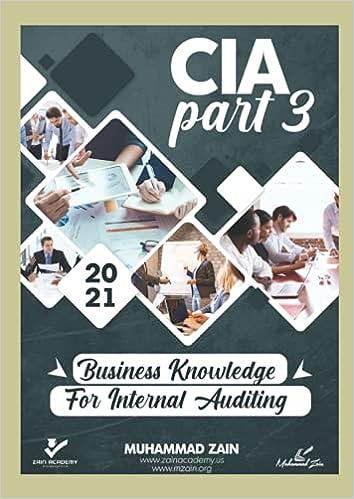Question
home / study / math / statistics and probability / questions and answers / 15-35 (objectives 15-3, 15-5, 15-7) in part v of ... Question
home / study / math / statistics and probability / questions and answers / 15-35 (objectives 15-3, 15-5, 15-7) in part v of ... Question 15-35 (Objectives 15-3, 15-5, 15-7) In Part V of the Pinnacle Manufacturing case, you prepared a performance format audit program. In Part VI, sample sizes will be determined by using nonstatistical or attributes sampling, and the results of the tests will be evaluated. You should use nonstatistical sampling unless your professor tells you to use statistical sampling. After reviewing the audit program you created in Part V, the audit manager decided to make some modifications. You agreed with her changes. The modified program is included in Figure 15-9. The audit manager has decided that the tests should be performed for the first 10 months including the month ended 10/31/11. You determine that document numbers are as follows: Document First number Last number Voucher 6734 33722 Receiving report 9315 23108 Check 12376 37318 Purchase order 3162 17200 FIGURE 15-9 Audit Program for Acquisitions and Cash Disbursements 1. Discuss the following items with client personnel and observe activities: a. Segregation of duties b. Use of an adequate chart of accounts c. Monthly reconciliation of accounts payable master file with the general ledger 2. Foot acquisitions and cash disbursements journals for a test month and trace postings to the general ledger. 3. Examine file of completed bank reconciliations. 4. Account for a sequence of cancelled checks. 5. Reconcile recorded cash disbursements with cash disbursements on the bank statement for a test month. 6. Trace entries in the acquisitions journal to related vendors invoices, receiving reports, and purchase orders. a. Examine indication of internal verification of dates, unit costs, prices, extensions and footings, account classifications, recording in the journal, and posting and summarization. b. Examine supporting documents for propriety. c. Compare prices on vendors invoices with approved price limits established by management. d. Recompute information on vendors invoices. e. Examine vendors invoices for proper account classification. f. Compare dates of recorded acquisitions with dates on receiving reports. g. Examine voucher document package for indication of internal verification. 7. Account for a sequence of purchase orders and voucher document packages. 8. Trace a sample of receiving reports to the acquisitions journal. 9. Select a sample of cancelled checks. a. Trace cancelled check to the related cash disbursements journal entry and date. b. Examine check for signature, proper endorsement, and cancellation by the bank. c. Compare date on cancelled check with bank cancellation date. d. Recompute cash discounts. Required a. Using the audit program in Figure 15-9, prepare a nonstatistical sampling data sheet for acquisitions following the format in Figure 15-2 (p. 490). Prepare all parts of the sampling data sheet except those that are blank in Figure 15-2. A formatted sampling data sheet can be downloaded using the Pinnacle link on the textbook Web site. Use the following guidelines. (1) Use only one sampling data sheet. (2) Select the sampling unit that will permit you to perform the most acquisition audit procedures on the audit program. (3) Include all audit procedures on the audit program that are consistent with the sampling unit you selected. (4) Decide EPER, TER, and ARACR for each attribute. Consider prior-year results for EPER. [See Figure 10-12 (p. 333) in Part III.] Use your judgment for the other two factors. (5) Decide the sample size for each attribute. b. Do the same thing for cash disbursements that you did in requirement a for acquisitions. You will not complete the actual results portion of the cash disbursements sampling data sheet. c. For acquisitions only, use an Excel spreadsheet to select random numbers for the largest sample size in the acquisitions sampling data sheet. Include the numbers in 517518both random order and sorted numbers, from low to high. Document how you selected the numbers. d. Assume that you performed all audit procedures included in Figure 15-9 using the sample sizes in requirement a (5). The only exceptions found when you performed the tests include the following: two missing indications of internal verification on a vendors invoice, one acquisition of inventory transaction recorded for $2,000 more than the amount stated on the vendors invoice (the vendor was also overpaid by $2,000), and two vendors invoices recorded as acquisitions several days after the receipt of the goods. Complete the sampling data sheet prepared in requirement a. Use Figure 15-4 (p. 496) as a frame of reference for completing the sampling data sheet. FIGURE 15-9
Step by Step Solution
There are 3 Steps involved in it
Step: 1

Get Instant Access to Expert-Tailored Solutions
See step-by-step solutions with expert insights and AI powered tools for academic success
Step: 2

Step: 3

Ace Your Homework with AI
Get the answers you need in no time with our AI-driven, step-by-step assistance
Get Started


